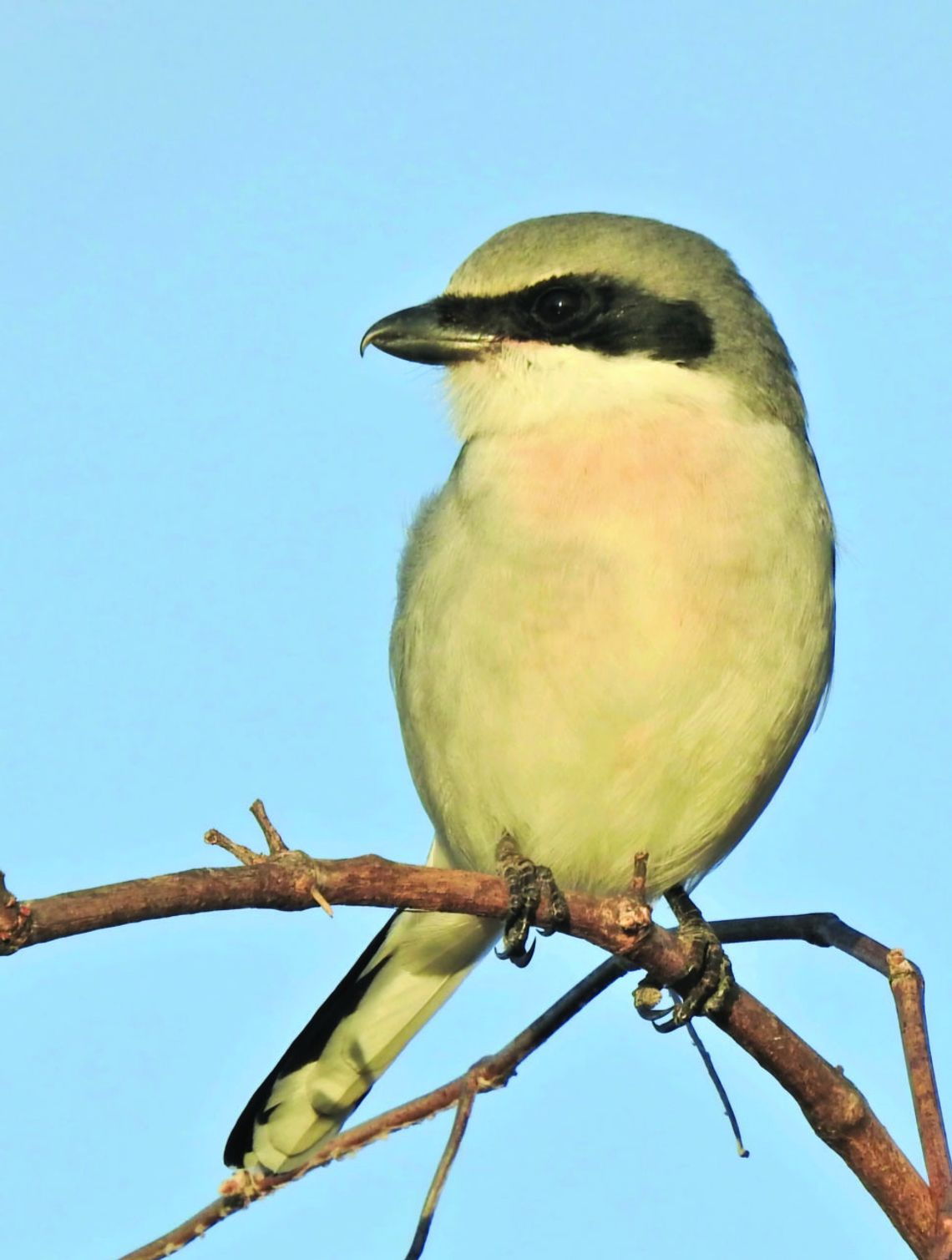CREEKSIDE AT THE CIBOLO
When I think of predatory birds, I think of hawks, eagles, ospreys or owls; large birds with hooked beaks for tearing prey they have seized with deadly sharp talons. But what about songbirds like the Eastern Bluebird or a Vermilion Flycatcher? Are these predatory?
According to the dictionary, a predator is an animal that preys on other animals. We know that hawks and their kin eat rodents, rabbits, snakes and other birds. They are indeed predators. So too the bluebird and flycatcher — for they prey on animals such as arthropods, yet we don’t classify them as predators as they lack hooked bills and talons.
Then there is the butcherbird.
Similar in size to a bluebird, it too eats its fair share of arthropods, but it takes predation to another level using its raptor-like bill to catch, kill and eat mice, voles, snakes, lizards and songbirds.
While I always love the appearance of bluebirds and vermilions, it is the Loggerhead Shrike that I anxiously watch for each October at the center.
I typically encounter one while it is perched at the top of a leafless branch. Reminiscent of a compact mockingbird, the shrike wears a black mask across its eyes, resembling a bank robber from an old television show.
While a mockingbird bullies other birds, chasing them from its cache of ripening fruits, its aggressiveness pales to that of the butcherbird, which brings with it a lethality that causes other species to give it wide birth.
According to a note in my first field guide, “A Guide to Field Identification Birds of North America,” published by Golden Press in 1966, my acquaintance with shrikes began during my freshman year of college near Bottineau, North Dakota. A year later in Arkansas, my relationship with this species blossomed when I discovered a nesting pair in the middle of campus and later an impaled skink.
Since that time, I have come across an Eastern Bluebird, snakes, small rodents and an uncountable number of insects, from grasshoppers to beetles, impaled on a barbed wire fence. Larders, as they are known are outdoor pantries, places to stash prey until they can be retrieved, the sharp twigs or barbs used to hold the prey while it is torn apart — a necessity as shrikes lack a raptor’s strong feet and sharp talons that serve this purpose.
I have also learned shrikes nest from mid-March to July, attempting two to three clutches of three-to-six young with each attempt. I have had the good fortune to hold them as we placed bands on their feet with one occasionally holding me — its bill clamped securely around a finger, creating more pain than blood. Memorable each time.
As is the case with many birds, they are in decline across their range; now endangered or threatened in 14 states. In Texas the news is mixed. They seem to be holding their own in west Texas and the Gulf Coast, but not so in central Texas.
For example, three years ago a colleague and I spent a winter documenting their numbers by color banding them in central Texas. The following year we returned to the area finding their former habitat converted to homes and strip centers ... and thus, no shrikes.
I have been fortunate to find a shrike each fall at the nature center as the habitat has remained stable. As you walk the prairie trails keep an eye open for the shrike’s rapid-fire flash of white and black wings as it chases its prey.
Who knows, you might even find impaled prey, the tell-tale sign of the butcherbird. Wouldn’t that be cool?









Comment
Comments